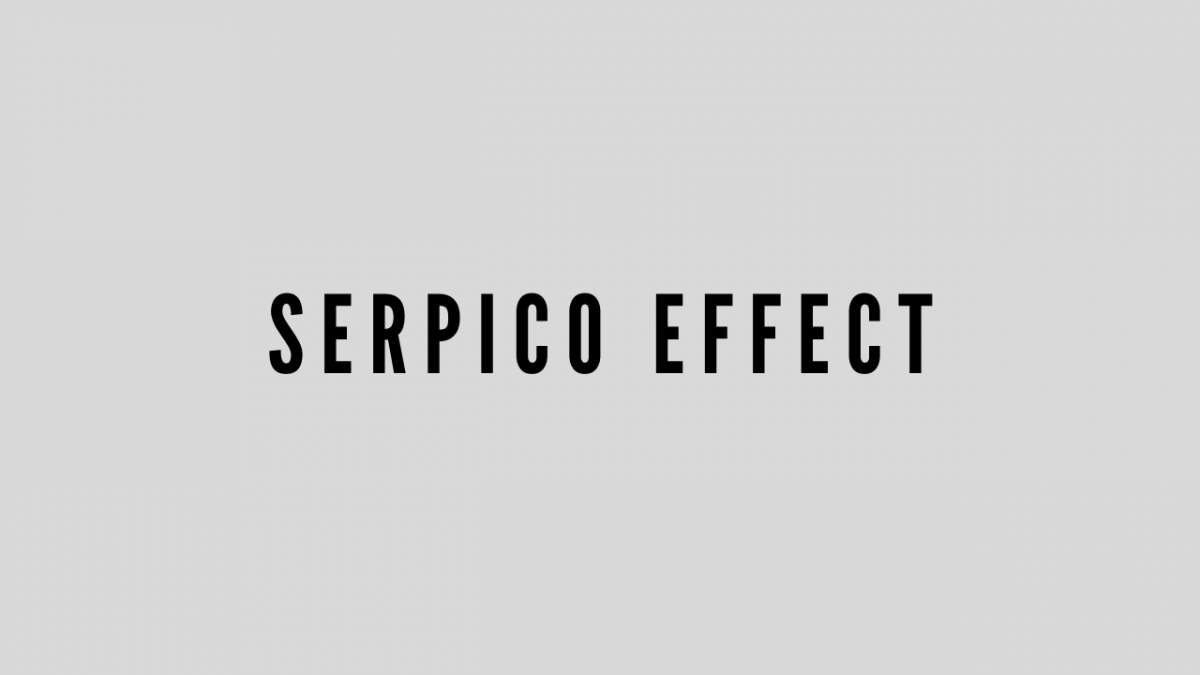Introduction
In the realm of decision-making, the Serpico Effect serves as a mental model that sheds light on the profound impact of human psychology on our choices. Inspired by the experiences of Frank Serpico, a courageous whistleblower who exposed corruption within the New York City Police Department in the 1970s, this concept explores how individuals succumb to social pressure and conformity, often leading to irrational decisions contrary to their best interests. Understanding the Serpico Effect is crucial for recognizing and overcoming the biases that influence our decision-making processes in various aspects of life.
The Essence of the Serpico Effect
The Serpico Effect refers to the phenomenon in which individuals, driven by the desire for social acceptance and fear of social isolation, conform to the prevailing norms, even when those norms are unethical, corrupt, or against their personal values. It stems from the innate human need to belong and the fear of facing the consequences of going against the group consensus.
The Relevance in Decision-Making
The Serpico Effect holds immense relevance in decision-making processes across personal life decisions, business scenarios, and public policy-making. It illuminates the subtle ways in which individuals and groups can be swayed by social influence, leading to irrational choices that contradict their own best interests and moral compass.
Examples of the Serpico Effect in Action
- Personal Life Decisions: Imagine an individual who aspires to pursue a career in the arts but faces immense pressure from their family to pursue a more conventional and financially stable profession. Despite their passion for the arts, they conform to the expectations of their family, sacrificing their true calling for the sake of social approval and avoiding potential conflicts. In this scenario, the individual’s decision is driven by the fear of social isolation and the need for validation, overriding their own aspirations.
- Business Scenarios: Within the corporate world, the Serpico Effect can manifest in unethical practices within organizations. For instance, consider a sales team that resorts to deceptive tactics and aggressive sales strategies to meet unrealistic targets set by upper management. Even if individual team members feel uncomfortable with these practices, they may succumb to the pressure of maintaining their job security, preserving social cohesion, and avoiding being labeled as “troublemakers.” This conformity perpetuates a toxic culture that compromises ethical standards and long-term organizational success.
- Public Policy-Making: The Serpico Effect is also evident in public policy-making, where politicians and policymakers may prioritize political expediency over the public good. They may conform to popular opinion or the interests of powerful stakeholders, even if it means disregarding evidence-based policies or compromising ethical principles. This conformity-driven decision-making can have detrimental consequences for society as a whole.
Mental Biases and Underpinnings of the Serpico Effect
The Serpico Effect is influenced by several cognitive biases and psychological underpinnings. One key bias is the conformity bias, where individuals tend to align their beliefs and behaviors with the majority to avoid conflict or social exclusion. Additionally, the fear of rejection and social ostracism fuels the Serpico Effect. The availability heuristic, which relies on readily available information, can also contribute to this bias as individuals tend to conform to prevailing norms due to their prominence in society.
Avoiding the Serpico Effect: To mitigate the influence of the Serpico Effect in decision-making, individuals can employ the following strategies
- Self-Awareness and Values Clarification: Take time to reflect on your own values, beliefs, and aspirations. Understand what truly matters to you and prioritize decisions that align with your personal principles, even if they go against the prevailing norms.
- Seek Diverse Perspectives: Actively seek out diverse viewpoints and perspectives. Surround yourself with people who challenge your thinking, encourage critical thought, and promote independent decision-making.
- Question the Status Quo: Instead of blindly conforming to established norms, critically evaluate the underlying justifications and consequences. Challenge the assumptions and biases embedded in the prevailing consensus.
- Cultivate Moral Courage: Develop the courage to speak up against unethical practices or decisions that compromise your values. Embrace the responsibility of being an agent of change and strive for integrity, even in the face of potential social repercussions.
Conclusion
The Serpico Effect underscores the powerful role of social influence and conformity in decision-making. By recognizing and actively addressing this mental trap, we can make more rational, ethical, and personally fulfilling choices. Through self-awareness, critical thinking, and the cultivation of moral courage, we can break free from the shackles of conformity and navigate decision-making with integrity and autonomy.
